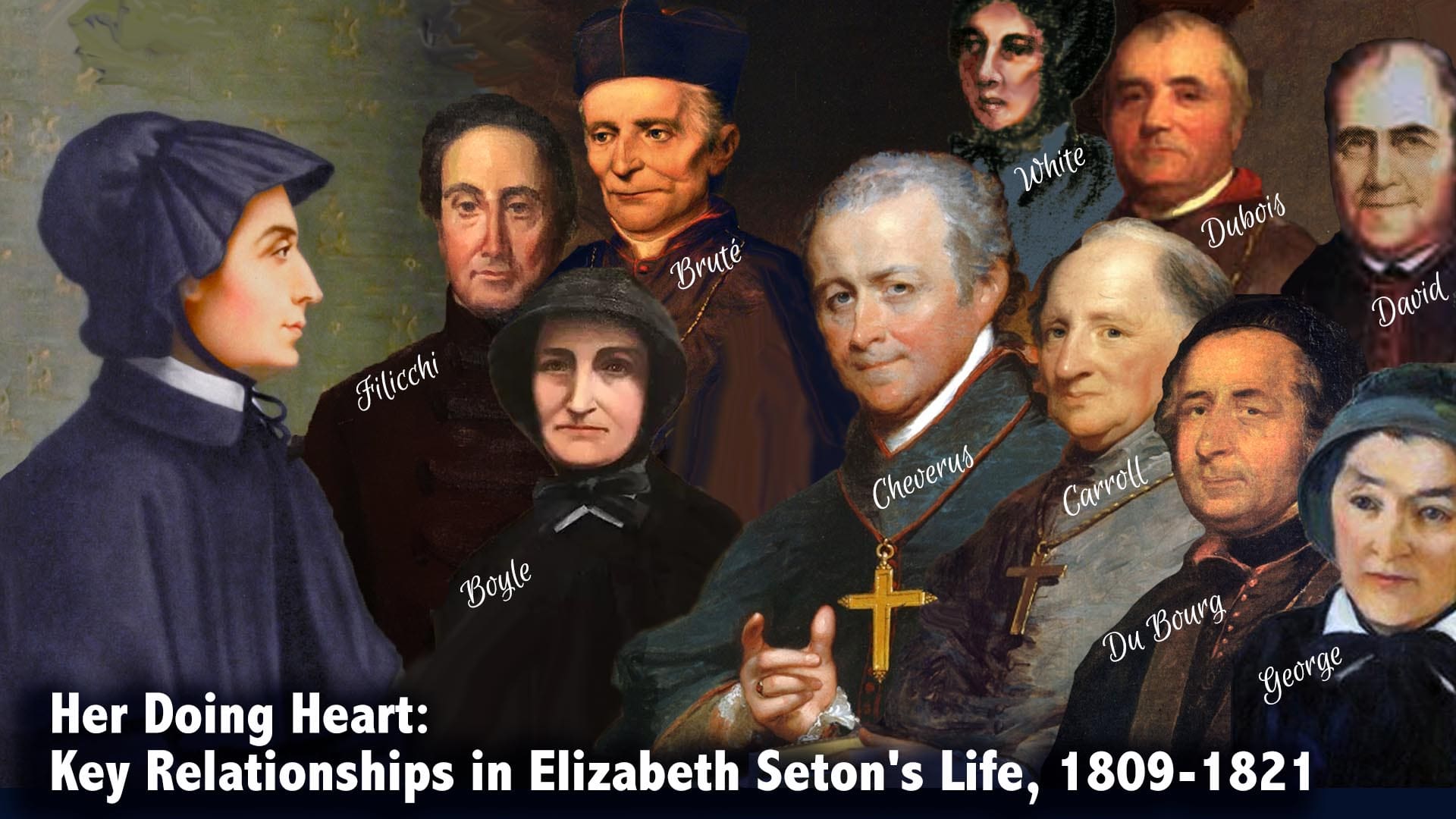Sr. Margaret John Kelly, DC, who died Nov. 24, 2022, in Emmitsburg, wrote the following excellent article on Mother Seton (among her many other accomplishments). In this series we present her article in six parts.
PART 2
Her Doing Heart: Key Relationships in Elizabeth Seton’s Life
Before looking at three specific relationships, it is helpful to consider Elizabeth’s views on relationships. In a January 1815 letter to her son, William, as he was setting out for Italy with Brute, she gave advice, which captured her own philosophy of interpersonal relationships. She urged him to practice respect for others, give gratitude for the favors received from others, be simple and appropriate in the use of material resources, have openness to different cultures and treat others as he would want to be treated. She also advised William to be prudent and cautious with strangers, to keep strict accounts of money, to remember that his mother, as his best friend, should know all and that, most importantly, God should not be offended. On the practical side, she advised, friendship is built by attention to the other and that parents are delighted when you notice their children.[1]
Elizabeth was also aware of her relational weaknesses and admitted to her son William in 1818, “You and I are often too softhearted about our friendships and too condescending to circumstances of the moment.” To Brute, she noted her efforts at holding back the doing heart. “From the first moment of the morning, I am in one continual watch to keep down my eyebrows and wear the ready smile, if even it sometimes be ghastly.”[2] She also compared her impetuosity with the patience of Dubourg who “could ever be found to unwind the ball as he does and stop to pick out every knot. Too happy I to break the knot and piece it again.”[3]
As with all of us, in her weakness was her strength. Short-term gains had to be sacrificed for long-term benefits. Only a reflective but spontaneous heart could have lived so heroically and motivated such major accomplishments.
Therefore, it seems appropriate to use as the prism for her relationships her interactions with three men who were critical to her as natural mother and religious foundress. The first is with John Carroll where we gain insights into the simplicity and perseverance of Elizabeth as she worked through the very difficult, personally and communally, situation of establishing her community. The second is with Simon Gabriel Brute who was such a true friend as well as disciple. Elizabeth’s relationship with Brute, just a few years her junior, reveals her playful spirit, her spiritual maturity, and her personal suffering. There is a consistent freedom and spontaneity here that, while present in most of her correspondence, reaches its zenith as she teased and challenged the French priest. Her run-on, almost stream of consciousness style, as well as her creativity, can easily be studied in her letters to Brute, who alternated between being her guide and her disciple. The third is with Antonio Filicchi who, while the contact was intermittent, served as a point of continuity and stability for Elizabeth. He had brought her through the loss of her husband, her conversion to the Catholic faith, the establishment of her community and provided her with both moral and financial support for her two families. There is in all three relationships a real sense of simpatico which only comes when persons have suffered and rejoiced together.
Through the three relationships, one sees Elizabeth gracefully alternating between being the one in charge and the one seeking assistance; the one who speaks and the one who listens. Her relationships, truly reciprocal and mutual, are marked by profound ideals and common sense; by high expectations and healthy realism; by open disclosure and prudent withholding; sensitive questioning and outspoken challenges. She appears to have effectively walked that narrow tightrope that allows for interest without intrusion, support without smothering, and which is woven of self-confidence, othercenteredness, practicality, and simplicity.
Elizabeth’s relationships in this period of maturity (age thirty-five forward) were spiritual, passionate, and constructive. They carried two characteristics which I think are also captured in that title “The Doing Heart,” and in her famous quotation to George Weiss of Baltimore: “If only we keep courage, we will go to heaven on horseback instead of idling and creeping along.”[4] She combines well the affective and effective sides of love which Saint Vincent de Paul wrote so much about. Love without expression of that love in service is not love at all. Relating eternal salvation to transportation modalities “going to heaven on horseback” captures Elizabeth’s personal orientation of being heaven-directed but earth-related in a wholistic, non-dualistic sense. Today, we speak of the integrated, balanced, inner-directed person, the mature stage of ego-integrity that Erik Erikson described. The only truly human, and thus truly Christian, stance in a relationship on this earth is that of mutuality, when one stands not in a subordinate or superior position but in one of equality of personhood under God. These three reveal that posture.
—–
[1] Brute, Mother Seton Notes, 76-80.
[2] Ibid., 217.
[3] Ibid.
[4] Ibid., 127.
Source: Kelly, Margaret J. D.C. (1993) “Her Doing Heart: Key Relationships in Elizabeth Seton’s Life: 1809–1821,” Vincentian Heritage Journal: Vol. 14: Iss. 2, Article 7.








0 Comments